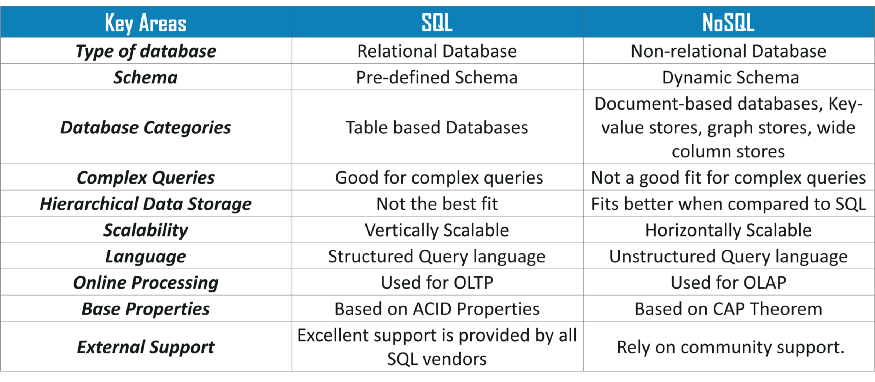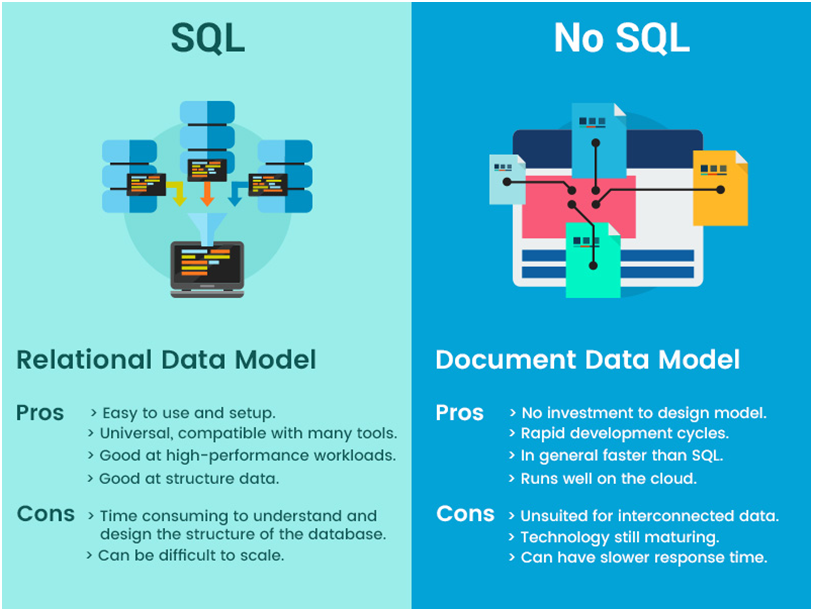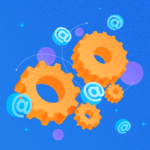Nowadays, customer behavior becomes more complex and market trends continue to shift rapidly. Thus, businesses need specialized technological systems to make sense of the mountains of data they generate.
We’ve all seen devices that can connect over a shared network, algorithms that can predict future consumer behavior, and devices that can talk to you. Have you wondered how the data behind all these technologies are generated?
Big data powers these marvels of technology, making it possible for AI and machine learning to process those numbers and statistics that have a real impact.
Simply put, big data is a large volume of structured and unstructured data used to understand customers and create strategic initiatives. It is a combination of software and application tools that can manage, collect, and analyze structured and unstructured data.
As companies require specific data management systems, the debates whether SQL or a NoSQL database is preferable are continuous. In this article, we are going to analyze the primary aspects and decide which system would be the best solution for big data management.
SQL and NoSQL Databases – What are They?
SQL is the language of a database. It reads as Structured Query Language designed to translate specific information from databases and manage the data held in a relational database management system.
SQL is usually used with open API applications like JBC or applications that can be translated into a language equivalent to Oracle syntax. Tasks like error handling and logging are also used within SQL frameworks.
NoSQL is a processing language that can retrieve information from databases without traditional table structures. These systems are distributed, and the data can be split into multiple tables, allowing all related data to come together in a single set structure. They are highly agile and reliable and can support a broad set of data cases, including predictive analytics in real-time.
Key Differences Between SQL And NoSQL Databases
Security Risks
Database security is one of the essential aspects of application security. Alleged access to your database can give a malicious attacker a dangerous amount of control over your information and datasets, exposing you to high-profile threats and ransom.
The threat to data security is one reason why it is important to put careful thought and research before choosing a database for your technology. As new databases and query techniques (NoSQL) emerge, old cyber-attacks are becoming obsolete, and attackers are looking for other ways.
This does not mean that NoSQL databases are not prone to attacks. According to security expert Mark Preston of Cloud Defense, “Certain security risks for your web applications can’t be identified from the exterior: common examples include blind SQL injection and insecure deserialization.”
Scalability
SQL databases are mostly vertically scalable, while NoSQL databases are horizontally scalable. When you want to increase the load on a single server with an SQL database, you will have to enhance its implementation hardware by increasing the RAM, SSD, or CPU load. On the other hand, you can handle more traffic on the NoSQL database by sharding (splitting and storing a single dataset into multiple databases).
Think of the difference between the two like this: in SQL, you are adding more floors to a building, while in NoSQL, you’re adding more buildings to create a neighborhood. Since the latter becomes more extensive and powerful, many organizations prefer to have a NoSQL database because it can handle large data sets cost-effectively.
The Structure
SQL databases are table-based, and processors that use SQL are schema-oriented. Before creating a document in a relational database, you have to delineate specific parameters like defining a schema, creating a table, and setting data sets according to rows to become accessible for SQL to process.
For instance, predefined scheme-based applications include Flight Reservations, Payroll Management, etc. These applications already have set structures in place, which is not hard for SQL to process. This familiarity with relational SQL makes it a preferred option for applications that require multiple steps or transactions in a row.
On the other hand, NoSQL databases have dynamic schemas and are designed for managing applications that interface with third-party customers. They are also column-oriented and document-oriented, allowing for greater flexibility when creating documents. You can insert and update data on the fly.
Some examples of different types of NoSQL database structure are:
Document-based NoSQL database: data is stored in JSON objects. Each document has key-value pairs that are easy for web developers to document directly using JSON. Additionally, they are also flexible and can easily be modified.
Key-Value database: All the data is stored as key-value pairs and can be anything from integers, strings, and other forms of complex symbols. The key-value database is ideal for horizontal scaling. It can also be extremely valuable for session-oriented applications where organizations try to capture a customer’s behavior in a particular session.
Wide-column-based database: This type of database stores data as records similar to any relational database. However, it can store large data amounts in dynamic columns. All related data can be stored logically in column families instead of multiple tables.
Advantages of Using SQL
SQL has numerous advantages, which makes it popular and reliable to use for various functions:
Faster Query Processing
The whole idea of using SQL to retrieve data from a database is about boosting performance. SQL uses fast and efficient queries to retrieve data quickly from large data sets. Operations like deleting, inserting, and manipulating data can happen in minutes.
The most significant advantage of using SQL is its automatic data engine’s partitioning of data. It can move large data amounts by splitting single partitions into multiple data sets using SWITCH rather than DELETE and INSERT.
Standardized Language
The purpose of having a standardized language for a database is to provide uniformity across all database application programs. It also makes it easy for developers to handle the database if they’re not coming from a very experienced background. It uses all primary keywords like INSERT, SELECT, and DELETE, and has simple syntactic rules, making it user-friendly and easy to understand.
Advantages of Using NoSQL
Since there are different types of NoSQL databases), each type has its benefits and strengths. However, there are some fundamental characteristics that they all share like:
Handling Large Volumes of Data
NoSQL databases became popular in the cloud computing era when large amounts of data had to be stored online. The reason is, this approach makes it possible to conduct a scale-out architecture. The scalability is achieved in a much more effective and painless way, as it is relatively simple to store and spread data in cloud computing environments.
It can also provide agile, high-performative processing of information at a large scale. For this reason, large corporations prefer to use NoSQL. It enhances performance and is reliable for handling large amounts of dynamic data at once.
Flexibility
Unlike relational databases that store all data in a particular way, NoSQL databases allow data to be held differently or closer to how applications will use it. This makes it more efficient for organizations. Specialists adopt NoSQL since it requires fewer transformations to store or retrieve data.
Additionally, since they don’t have predefined schemas, developers can make changes, making it easier to adopt the database to new forms of data. This eliminates any loopholes in the development process that is most commonly seen with schemas in relational databases.
Minimal Downtime
The scale-out architecture used by NoSQL databases allows retrieving large amounts of data from data sets and handling immense volumes of traffic quickly and efficiently.
Moreover, many NoSQL databases can be updated according to the data structure with zero or minimal downtime. One of the most popular NoSQL databases used by developers is MongoDB.
Conclusion
Both SQL and NoSQL databases have their pros and cons. Your choice will depend entirely upon the type and size of data you process and how quickly you need it.
If you want to analyze spreadsheets, an SQL-type database would be preferable, as relational databases are ideal for exploring columns and rows of information. However, if you’re going to explore semi-structured data (such as social media text mining and image processing), a NoSQL-type database will work best since it can combine all related dynamic information in a column format.
Hopefully, this article has provided you with sufficient information regarding SQL and NoSQL databases to help you get started right away.
Tags: data management, nosql, sql Last modified: October 07, 2022












